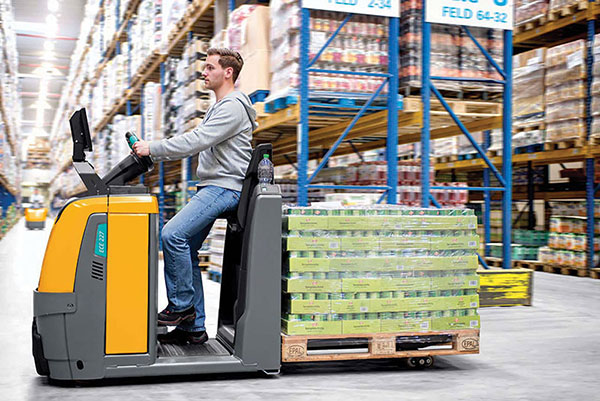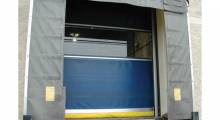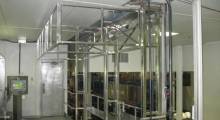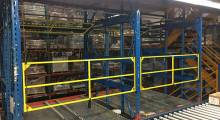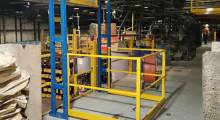At a time when attracting and retaining lift truck operators is challenging—with DCs in tight proximity to each other competing for a finite pool of labor—one way to set your operation apart starts with the truck itself: ergonomic features that contribute to operator comfort.
Many distinct features help with comfort, from seats and backrests of different sizes, to other ergonomic benefits more integral to the core design of the truck itself, says Chad Munger, product manager at Mitsubishi Logisnext Americas.
“It all ties back to putting operator comfort and operator needs at the center of lift truck design and then building the rest of the truck around that principle,” says Munger.
For example, with Jungheinrich lift trucks, one of five brands offered by Mitsubishi Logisnext Americas, some ergonomic truck features are inseparable from the mechatronics of the truck, such as an electric steering feature called jetPILOT on Jungheinrich’s ECE central control pallet rider that makes driving the truck like steering a car. Or, with the company’s low-level orderpickers, a remote-advance feature called easyPILOT Follow leaves the operator’s hands completely free.
This type of smart remote advance, explains Munger, allows the vehicle to follow the operator automatically “like a loyal puppy following its owner.” The ergonomic benefit, Munger says, is that the operator doing order picking doesn’t have to climb on and off the truck to advance, while the solution also precisely moves the truck to the right halt location when picking to multiple pallets, reducing wasted steps.
Other features are a bit simpler, but still part of operator-centric truck design, such as storage tray options and handy stow cubbies for gear, adds Munger. “They may seem like minor details of the truck, but it’s all part of making the operator’s job easier,” he says.
Regional differences when it comes to stand-up versus sit-down variants of the same type of truck include stand-ups being prevalent in the U.S. market and sit-down variants often preferred in Europe. With stand-up trucks like the ECE, Munger adds, fold-down seats are an ergonomic feature, because they offer comfort for longer transport runs, and when folded up, act as a backrest.
For some larger DCs, however, a sit-down model may be best if much of the truck’s use is for longer distances. “Sometimes, layout and distance travel will influence the best options and truck variants for operator comfort,” says Munger.
Lift truck ergonomic features often tie into the needs of specific types of applications and truck types. For example, Jungheinrich’s EJE walkie, which is often used for truck unloading or loading, has a “crawl speed” feature that is engaged with the handle in the upright position, which helps with tight corning in trailers. “Have a good understanding of your application needs and how you wish to improve efficiency,” says Munger.
Every major lift truck OEM can rattle off comfort and ergonomic features, such as suspended floors, steering mechanisms, while “integrated” lithium trucks designed to take advantage of the energy dense, compact nature of lithium batteries are allowing OEMs to do things like lower cab step up heights.
But do ergonomic features really help attract and retain operators? As Munger sees it, they are part of the answer to a tough challenge. “It can only help with retention if the trucks in your fleet are designed around operator comfort,” he says.
Article topics
